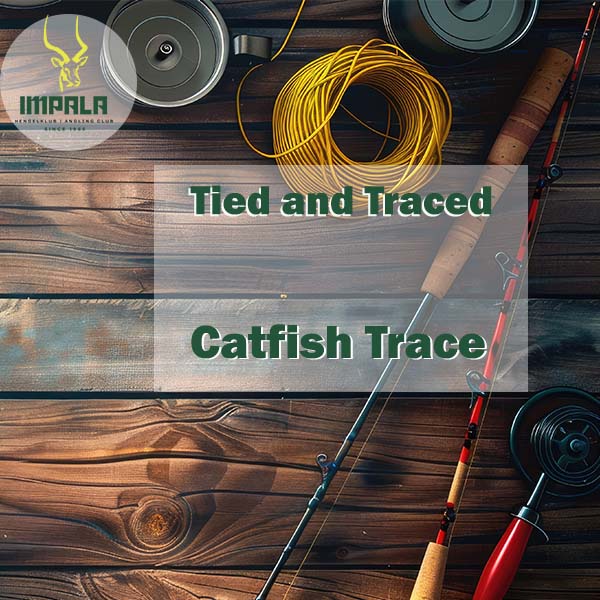Welcome to another article of our "Tied and Traced" part in the How To Series. This guide, shared by seasoned anglers from the Impala Angling Club, is designed to enhance your fishing skills. Today, we focus on tying a catfish trace, an essential skill for securely connecting a catfish trace. Follow these steps to master this technique:
Materials Needed:
- Catfish Hook: A sturdy, sharp hook suitable for catfish.
- Mono or Braid Line: Choose according to your preference and the water conditions.
- Swivel: Used to prevent line twists.
- Leader Line: A stronger, abrasion-resistant line.
- Sinker: Optional, depending on fishing conditions.
- Scissors or Line Cutter: For clean line cuts.
Step-by-Step Guide:
Step 1: Attach the Hook to the Leader Line
- Select Your Hook and Line: Choose a hook appropriate for catfish and a leader line with high durability.
- Thread the Line Through the Hook Eye: Insert about 6 inches of the leader line through the eye of the hook.
- Form a Loop: Double back the line to form a loop alongside the hook.
- Create Wraps: Holding the loop in place, wrap the line around the shank of the hook 5-7 times, moving towards the hook eye.
- Thread the End: Pass the end of the line through the loop created at the hook eye.
- Pull Tight: Moisten the knot, then pull the tag end and the standing line to secure the wrap. Trim any excess line.
Step 2: Attach the Leader Line to the Main Line
- Choose a Swivel: Select a swivel that matches the size of your line and hook.
- Tie the Leader to the Swivel: Use an improved clinch knot or a palomar knot for added security.
- For Improved Clinch Knot:
- Thread the leader through the swivel eye.
- Wrap the line around itself 5-7 times.
- Pass the end through the loop near the swivel.
- Tighten and trim excess line.
-
For Palomar Knot:
- Fold about 6 inches of line and pass it through the swivel eye.
- Tie an overhand knot with the doubled line.
- Pass the swivel through the loop.
- Tighten and trim excess line.
-
For Palomar Knot:
Step 3: Connect the Main Line to the Swivel
- Prepare the Main Line: Cut an adequate length of the main line and attach it to the other end of the swivel using the same knot technique.
- Add a Sinker: Optional, attach a sinker above the swivel if your fishing conditions require it.
Step 4: Final Check
- Ensure all knots are tight and secure.
- Double-check the strength and look for any weak points.
By following these steps, you’ll have a reliable and robust catfish trace ready for your next fishing adventure. Experiment with different leader lengths and hook sizes to find what works best for you.
Stay tuned for the next article in the "Tied and Traced" series, where we'll continue to share invaluable fishing techniques and tips from the seasoned anglers of the Impala Angling Club. Tight lines and happy fishing!
Impala Angling Club has been at the forefront of angling since 1965 The club and its members are family oriented and have the passion to grow and develop communities youth by affording them opportunities to grow the sport. Impala angling club consist of various previous and current provincial and national anglers within the club. The club is the gateway to representing a province or a country. For more information about Impala Angling Club and services, visit our website at www.impalaclub.co.za

